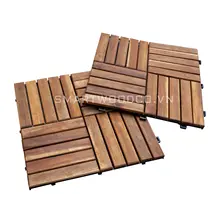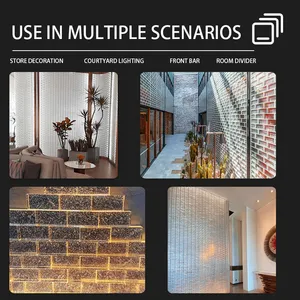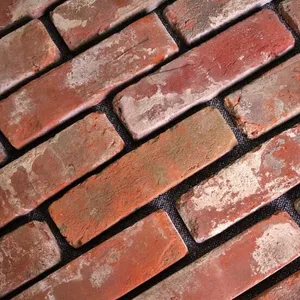Introduction
Welcome to the world of thin bricks, a revolutionary material that is transforming the way we perceive and utilize bricks in our spaces. Offering a unique blend of aesthetic appeal and practical benefits, thin bricks are redefining the boundaries of design and architecture. Made from the same materials as traditional bricks but thinner and lighter, they are versatile, durable, and DIY-friendly. This article delves into the aesthetic charm of thin bricks, their historical significance, the variety they offer, and how they can revolutionize your space. We will also explore their practical benefits, including durability, maintenance, energy efficiency, and sustainability.
Understanding Thin Bricks: Definition and Features
Thin bricks offer a fantastic aesthetic appeal while being resistant to noise and heat. They are made from the same materials as modular clay bricks but are much thinner and lighter. This makes them extremely versatile, allowing for unique designs. Thin bricks are durable, low-maintenance, and DIY-friendly. They come in a variety of shapes and colors, expanding your design potential for DIY projects. Real thin bricks are made from fired clay, ensuring their longevity.
The Aesthetic Appeal of Thin Bricks
Thin bricks, also known as brick veneer, offer an expansive design variety. They come in a multitude of shapes, sizes, colors, and textures, providing an inspiring palette for any design. These real clay bricks, though thinner than traditional masonry, do not sacrifice aesthetics. They can be installed using different methods, saving time and increasing precision on a project, without leaving a monotonous 'prefabricated' appearance. The variety of thin bricks available can help achieve your design goals, offering a lightweight, economical, and time-saving option.
Historical Charm and Modern Elegance
Brick, a traditional building material, has been used in construction for thousands of years. Contemporary architecture creatively incorporates brick into design, blending it with different materials. Thin brick, a lighter alternative, combines the technical and aesthetic qualities of traditional brick with the advantages of being lightweight and space-efficient. It can be applied to diverse surfaces, such as walls and facades, without additional structures. Various projects showcase the classic, timeless look of brick masonry, along with design flexibility and easy installation.
Variety of Colors, Textures, and Patterns
Manufacturers offer a wide variety of products, including different brick shapes, sizes, colors, and textures. For instance, clay face brick is available in a combination of over thirty colors, eight textures, and sixteen sizes. Thin brick, also known as brick veneer, has nearly as many color, texture, and size options as the full face bricks. These different sizes and thicknesses, combined with the variety of textures and colors available, create an inspiring palette for any design.
How Thin Bricks Can Revolutionize Your Space
Thin bricks, with their lightweight and space-efficient properties, can revolutionize your space. Initially developed in the 1950s to reface existing constructions, their application now extends to both new and existing residential and commercial structures. They enhance interior and exterior design elements such as floors, accent walls, kitchen backsplashes, ceilings, fireplaces, sidewalks, and exterior siding. Various resources provide inspiration and practical guides to incorporate thin brick into design, achieving a stylish contrast of elements or subtle aesthetics that blend with the existing space.
Transforming Interiors: Living Rooms, Kitchens, and More
Designers are increasingly using thin bricks to add depth and layers to interiors. These 1/2" thin bricks can be applied directly to sheetrock, making them a fantastic choice for backsplashes, mudrooms, laundry rooms, wine cellars, and accent walls. Thin bricks are replacing porcelain tile as the material of choice for backsplashes due to their natural look and feel. In open-plan homes, thin bricks on an accent wall can add character and define different spaces. The potential of thin bricks in interior design is just beginning to be unlocked.
Enhancing Exteriors: Facades, Patios, and Landscapes
Thin bricks, whether clay, cement, or marble-based, offer a transformative solution for enhancing exteriors. Their half-inch thickness makes them ideal for veneering facades, patios, and landscapes. The panels for easy brick application, which can be easily screwed on walls, are a game-changer. They have tracks where bricks are laid, eliminating efforts for keeping the application level. Moreover, they feature water channels that discharge humidity on exterior facades, ensuring durability and longevity. Thin bricks are not only aesthetically pleasing but also practical and efficient for exterior applications.
Practical Benefits of Thin Bricks
Thin brick offers practical benefits in terms of cost-effectiveness, durability, and easy installation. It requires fewer materials and less labor for installation, reducing costs compared to full-sized bricks. Thin brick is highly durable, resistant to cracking, fading, and chipping, ensuring a lasting appearance. It's also low maintenance, requiring only routine cleaning. The reduced weight of thin brick makes it easy to handle and install, saving time and cost associated with demolition. It also provides an additional layer of insulation, reducing energy consumption.
Durability and Maintenance
Thin brick is highly durable, resistant to cracking, fading, and chipping, ensuring a lasting and attractive appearance for years to come. It is relatively low maintenance, with routine cleaning usually sufficient to keep it looking its best. Its inherent durability eliminates the need for frequent repairs or replacements. Thin brick also provides an additional layer of fire protection, enhancing the safety of your property. It is resistant to pests, such as termites, and can withstand various weather conditions without deteriorating.
Energy Efficiency and Sustainability
Thin brick panels contribute significantly to energy efficiency and sustainability. These panels create robust thermal barriers, preventing drafts and enhancing energy efficiency. Furthermore, the lightweight nature of thin bricks reduces their environmental impact. They are less expensive to transport, requiring less fuel and resulting in fewer carbon emissions. Some experts estimate that transporting thin bricks uses five times less fuel than traditional bricks, making them a more sustainable choice for construction.
Conclusion
In conclusion, thin bricks are a game-changer in the world of design and architecture. Their aesthetic appeal, combined with their practical benefits, makes them an ideal choice for both interior and exterior applications. Whether you're looking to add depth to your interiors or enhance your exteriors, thin bricks offer a versatile, durable, and cost-effective solution. Their lightweight nature not only simplifies installation but also contributes to energy efficiency and sustainability. With a variety of shapes, sizes, colors, and textures to choose from, thin bricks provide an inspiring palette for any design. Embrace the revolution and transform your space with thin bricks.












































 浙公网安备 33010002000092号
浙公网安备 33010002000092号 浙B2-20120091-4
浙B2-20120091-4